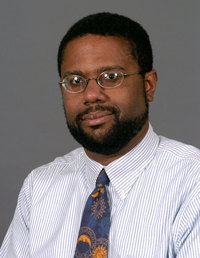Promises Kept: A New Frontier
JFK 50 Years Later: What Are the Legacies of HisPresidency and Assassination?
By Windsor A. Morgan, Jr., associate professor of physics and astronomy
 In a 1961 message to Congress, President Kennedy set an audacious goal: to put a person on the moon and return that astronaut safely to Earth. At the time, the U.S. had just seven astronauts, only one of whom had gone into space without orbiting the Earth. The mission had lasted less than 16 minutes.
In a 1961 message to Congress, President Kennedy set an audacious goal: to put a person on the moon and return that astronaut safely to Earth. At the time, the U.S. had just seven astronauts, only one of whom had gone into space without orbiting the Earth. The mission had lasted less than 16 minutes.
Kennedy set this task for the U.S. to show the world that Americans could lead the way into space. The Soviet Union had been the first country to put a satellite and a human into space. By declaring a new frontier of the moon, he jump-started a decade of missions, effort and discovery that has not been duplicated since. The robot probes of the Surveyor missions determined ideal places to land on the moon, and projects Gemini and Apollo demonstrated new methods for space travel, showing that humans could work in space. Finally, in July 1969, NASA made good on Kennedy’s promise. Neil Armstrong and Edwin Aldrin landed on the moon and returned safely to Earth.
Since NASA’s last lunar astronauts returned to Earth, no human has left Earth’s orbit; however, presidents George H. W. Bush and George W. Bush have tried to channel Kennedy’s 1961 charge. In 2010, Barack Obama reaffirmed the goal to return astronauts to the moon and to travel to Mars by the 2030s.
It is disappointing that these goals have such faraway deadlines. There is no such fierce urgency as during the 1960s. Perhaps it is because we don’t have an obvious competitor as we did in the Soviet Union. That we succeeded in getting to the moon eight years after his address to Congress speaks to Kennedy’s ambition and inspiration and shows that if the country puts its mind to it, it could do it again.
Read more faculty perspectives on JFK.
Published November 20, 2013